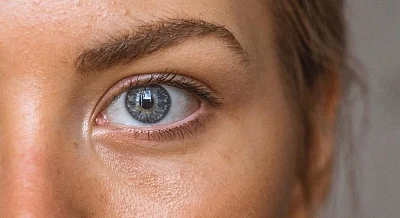Cataract is the clouding of the naturally clear lens of the eyes that slowly degrades the vision quality. Most cataracts develop gradually with an undisturbed change in vision.
People are often unaware of the fact that they might be experiencing the condition since the change in vision is so slow. As the cataract becomes larger, the lens becomes more clouded. Cloudier the lens, more poor is the vision.
Cataract usually affects both the eyes together but one eye may be affected by a more advanced level of the condition, which causes a visual difference between the two eyes. Poor vision as a result of cataract can lead to difficulty in reading, driving at night, playing golf, etc.
Know more about the causes, types, symptoms, diagnosis, and treatment of cataract in details.
Types of Cataract
According to the doctors of Cleveland Clinic, there are basically four types of cataracts.
A nuclear cataract develops deep in the middle of the lens and slowly causes the centre to become yellow or brown. This further clouds the vision and is one of the common types of cataract.
A cortical cataract is characterised by the whitish, wedge-shaped streak, which develops around the edge of the lens cortex.
A posterior sub-capsular cataract develops in the back of the lens, right in the part of the light. This type of cataract affects the vision quicker than the other two types and develops faster as well.
Congenital cataracts are the ones you are born with or which develop in your childhood. It is mainly due to genetics or intrauterine infection.
Causes of Cataract
The main causes of cataract include (Mayo Clinic):
Age
Radiation
Smoking and Alcohol
Vitamin C deficiency
Long term medications like corticosteroids
Trauma or injuries penetrating the eye
Genetic disorders such as down's syndrome or edward's syndrome
Eye diseases such as retinopathy or retinal detachment
Medical condition such as diabetes mellitus, metabolic, and nutritional diseases, wilson's disease
A cataract develops in the lens. The lens are made up of water and protein and is positioned behind the iris. The protein is positioned in such a way that the lens is clear, allows the light that passes through the eyes to form a sharp and clear images on the retina.
Age and other factors begin to alter the structures of the protein. They start to gather and clump together, clouding the small area within the lens. As the cataract becomes larger, the cloud becomes dense and slowly starts to cover the bigger part of the lens, which further results in burred vision.
Symptoms of Cataract
According to Healthline, various symptoms of cataract incude:
Blurred vision
Diminished night vision
Dull colour vision
Sensitivity with light or glares
Seeing hallows around light
Double vision
A need for brighter light
Diagnosis for Cataract
According to the UK NHS, the doctors will diagnose the cataract in one or all of the following ways:
Doctor diagnoses cataract majorly during the routine check up and before they confirm for cataract, they rule out all the other medical conditions that might be affecting the vision.
Visual acruity test uses a chart to see how well can you read a series of letters written there. Then your doctor decides if your eyes show any signs of impairment.
Slit lamp examination allows your doctor to see the magnified structures of your eye under an intense line of light to check for any abnormalities in the tiny structures.
The retinal examination allows the doctor to out eye drops to widen your pupils so that he can check the back of the eye with the help of slit lamp technique.
Applanation tonometry helps to check the fluid pressure in the eyes with the help of various devices.
Treatment for Cataract
The only treatment for cataract is the cataract eye surgery. Your doctor might suggest the procedure if he finds that your glasses are not helping with the blurred vision and you find it difficult to carry out the daily life activities.
Generally, cataracts do not harm the patients unless they suffer from high blood pressure, diabetes or obesity.
In a cataract surgery, the clouded lens is replaced with the artificial lens, which then becomes a permanent part of your eye.
(At The Quint, we question everything. Play an active role in shaping our journalism by becoming a member today.)
